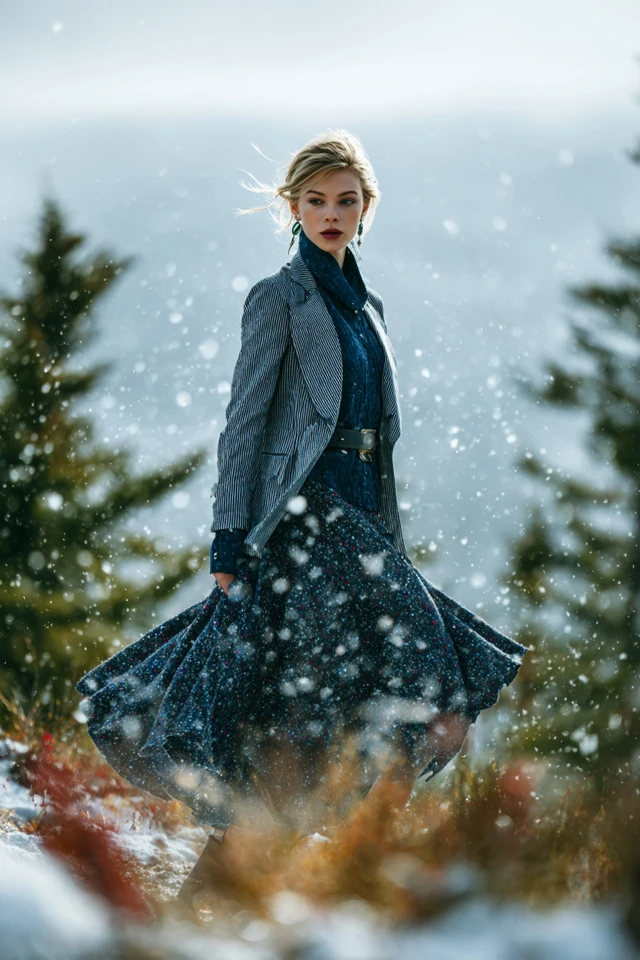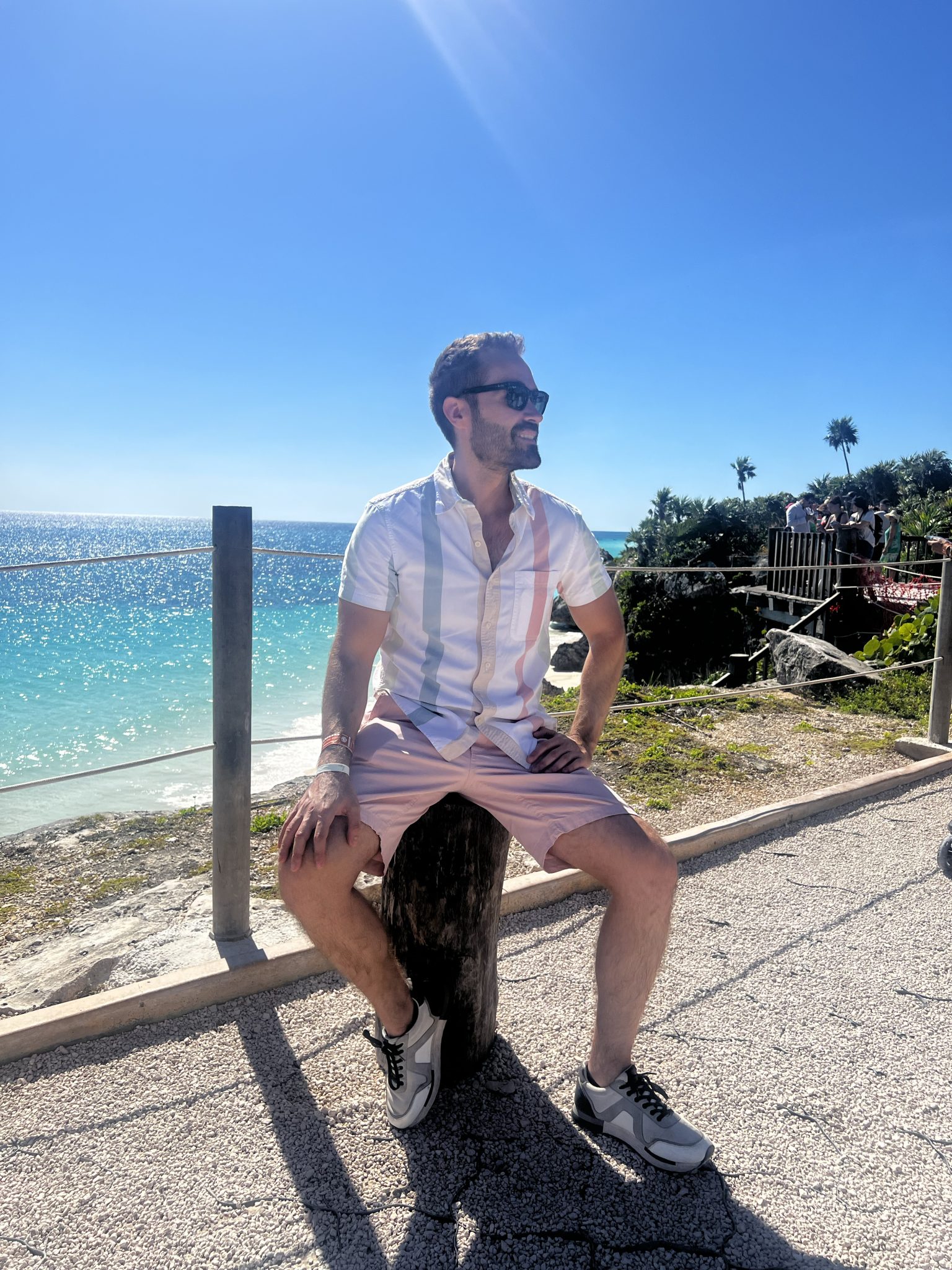Introduction
There was a crisp, quiet morning last winter when I stood in front of my closet, contemplating the perfect outfit for an important business meeting. The challenge wasn’t just about fitting into the “business casual” mold—it was about choosing colors that would boost my confidence, reflect the season, and speak volumes before I even said a word. I reached for a deep burgundy wool blazer paired with navy trousers, a combination that felt both bold and approachable. That moment crystallized for me how pivotal the winter palette is in shaping how we present ourselves in professional spaces.
Winter’s cooler months often inspire us to layer up and seek warmth, but there’s an art to selecting colors that don’t just visually warm, but emotionally empower. Understanding the nuances behind the business casual winter color palette is more than a fashion choice—it’s a strategic decision rooted in color psychology and image crafting. For anyone navigating office dress codes while wanting to express personal style, this topic matters deeply.
About the Author and My Trend Boutique
In this article, we’ll explore the intersection of seasonal trends, psychological impact of color, and body-conscious style choices. Whether you’re refreshingly updating your wardrobe or seeking timeless pieces, you’ll find actionable insights here to help you dress to impress in winter with a palette that elevates mood and commands respect.
Foundational Concepts
Before delving into specific colors and styling tips, it’s essential to understand the key concepts that inform why certain hues and garments work better in business casual winter settings.
Color Psychology
Color psychology studies how different colors influence human mood, perception, and behavior. For instance, blue conveys trust and calmness, red can evoke power and passion, while muted grays and browns suggest reliability and professionalism. As a fashion designer trained in color psychology, I’ve observed how selecting the right palette impacts not only how others perceive us but also how we feel within our own skin. This science explains why a carefully curated winter palette isn’t simply seasonal but deeply strategic.
Trend Forecasting
Trend forecasting combines data analysis, cultural movements, and market research to predict which colors and styles will gain prominence. For business casual wardrobes, forecasting means balancing fresh trends with durability—nurturing collections that are contemporary but not fleeting. By understanding trend cycles, you invest smartly in pieces that remain relevant through multiple seasons, saving costs and reducing wardrobe fatigue.
Dressing to Impress
“Dressing to impress” is about leveraging clothing to create professional confidence and positive social impressions. Psychologist Amy Cuddy’s research reveals that our own attire affects our posture and confidence, while observers form snap judgments based largely on what they see first, often within seconds. The colors and fabrics chosen for winter business casual wear communicate competence, creativity, or approachability, shaping outcomes in meetings and networking.
Picture Gallery
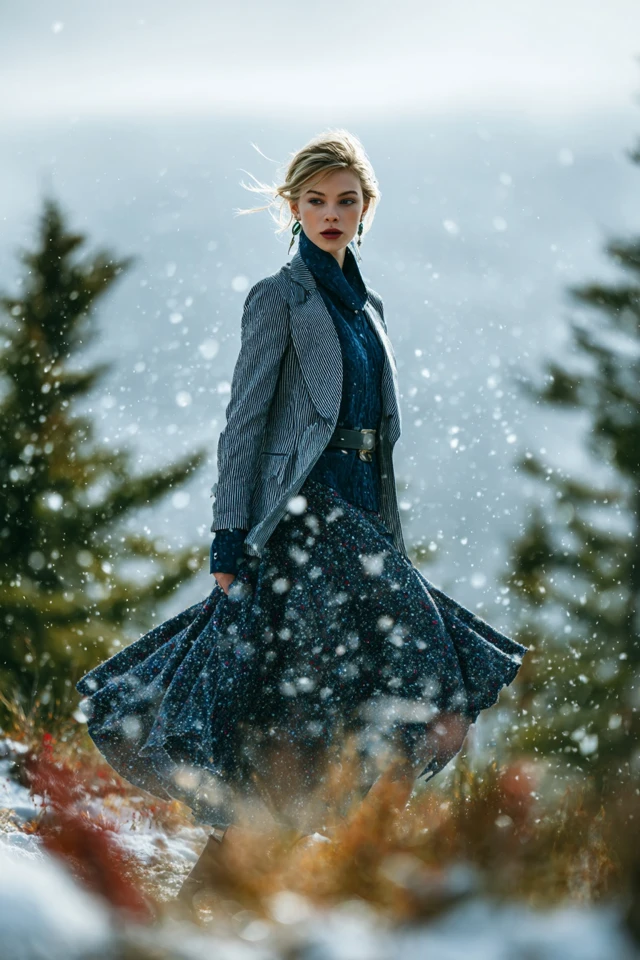
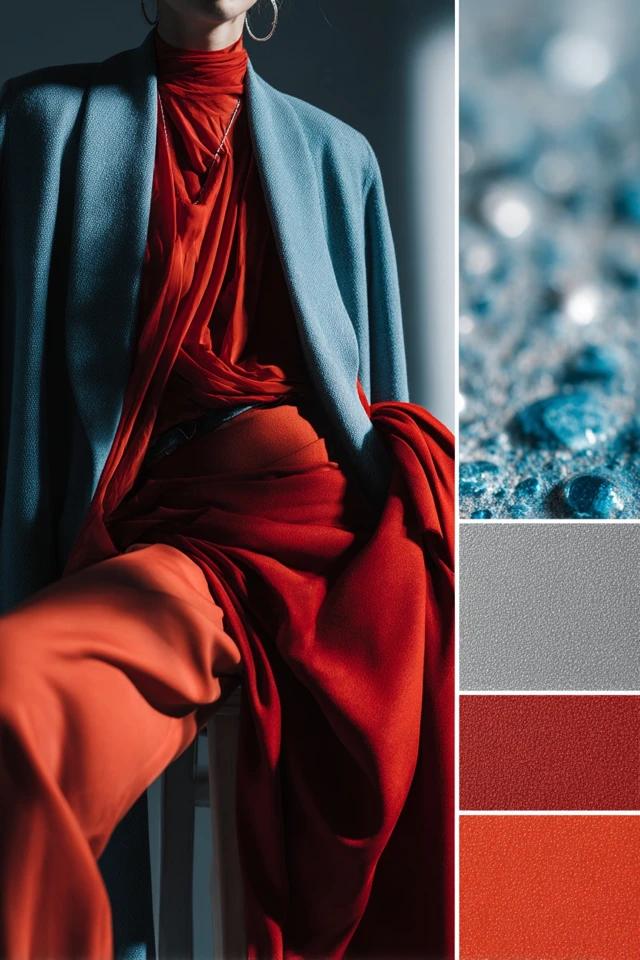

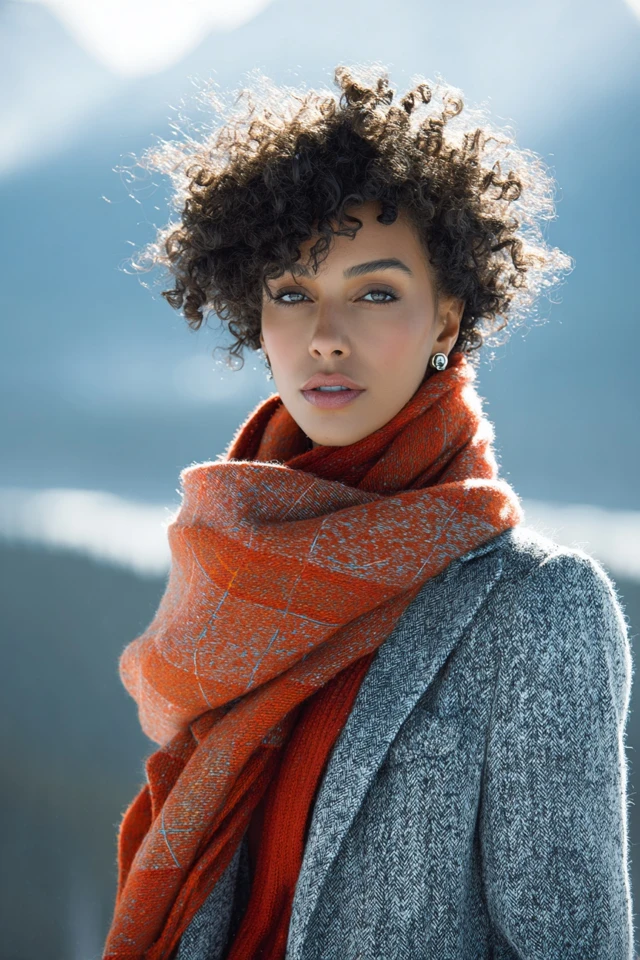
Color Psychology & Emotional Impact
Colors don’t just adorn us; they actively shape our emotions and perceptions. Neon hues might energize but overwhelm, while muted earth tones evoke stability without distraction. In winter business casual wardrobes, the emotional impact of color is key to branding your professional image.
Blue: Often dubbed the “color of trust,” blue shades ranging from navy to steel evoke calmness and dependability. Wearing navy blazers or blue knitwear instantly positions you as reliable and focused, excellent for client meetings or presentations.
Burgundy & Wine: These rich reds bring warmth to cold days while communicating confidence and sophistication. A wine-colored scarf or woolen skirt hints at creativity without straying from professionalism.
Charcoal Gray: A timeless neutral, charcoal conveys seriousness and approachability simultaneously. It pairs flawlessly with brighter accent colors to balance authority and openness.
Forest Green & Olive: These deep greens are associated with growth and stability. Wearing them in winter, through tailored coats or wool sweaters, imparts a grounded energy that resonates well in collaborative professional environments.
Soft Neutrals & Creams: Light grays, beige, and creamy taupes deliver warmth and softness, preventing a winter wardrobe from feeling harsh or stark. They’re perfect for layering and harmonizing bold seasonal colors.
First-impression science underscores that within the first 7 seconds of meeting, colors influence perceptions of warmth, competence, and trustworthiness. Thoughtfully choosing palette pieces can help you own those first moments.
Personal Style & Body Type Considerations
No matter how on-trend or psychologically supportive the color, fit and personalization remain crucial. Aligning your winter business casual colors with silhouettes and fabrics tuned to your body type and complexion enhances your overall presence.
Silhouettes & Fabrics
- Hourglass: Embrace tailored pieces like cinched waist blazers and pencil skirts in structured fabrics that celebrate curves. Choose deep jewel tones (sapphire or emerald) to enhance your natural richness.
- Rectangle: Introduce layering and textured fabrics—cable-knit sweaters, boucle jackets—to create dimension. Opt for harmonious tonal palettes like soft grays and cool blues to add softness to streamlined shapes.
- Apple: Focus on A-line skirts and longer cardigans in matte fabrics that subtly define the waist and elongate the torso. Warm neutrals paired with strategic pops of color (burgundy or forest green accents) add approachable flair.
- Pear: Balance fuller hips with darker bottoms and lighter, eye-catching tops in cream or pastel shades; fabrics with slight sheen like silk blends keep the upper body visually lighter.
Complexion Considerations
Skin tone intimately guides which winter palette hues glow versus those that wash you out:
- Cool undertones: Embrace icy blues, charcoal grays, and true jewel tones such as amethyst or emerald for vibrant contrast.
- Warm undertones: Opt for rich olives, rust reds, and creamy neutrals that harmonize beautifully and brighten appearance.
- Neutral undertones: Lucky you—both cool and warm hues pair well. Use this flexibility to mix trending colors with classics.
Quick Self-Checklist
- Do I feel confident when wearing this color in natural light?
- Does the fabric complement my body shape without adding bulk?
- Can I mix and match this piece with core wardrobe staples?
- Does the color enhance my natural complexion or wash it out?
- Is this outfit appropriate for my business casual environment?
Current Trends & Timeless Classics
This winter’s business casual palettes blend fresh, trend-forward colors with timeless staples to create versatile, elegant wardrobes. Trend forecasting points to the rise of subtle metallic accents and cozy, tactile fabrics alongside strong, grounding color statements.
- Trending Colors: Deep plum, burnt orange, and steel blue are dominating runways and office corridors alike. These unexpected choices add vibrancy without sacrificing professionalism.
- Textural Trends: Wool blends, velvet accents, and soft leather are popular, encouraging tactile layering that elevates simple color palettes.
- Timeless Classics: Navy, charcoal, cream, and camel remain pillars for sophisticated winter dressing—perfect foundation hues that hold through decades.
Combining trend colors like burnt orange with timeless navy trousers or cream sweaters keeps your look fresh yet rooted, making capsule wardrobe curation effortless and sustainable.
Practical Tips & Recommendations
Here are actionable strategies to master the business casual winter color palette and style:
- Shop smart: Invest in key pieces in neutral shades first—navy blazer, gray trousers, cream knit—then add a statement item each season in trending colors.
- Layer thoughtfully: Use scarves, cardigans, and coats in bold seasonal hues to add dimension and warmth while maintaining professionalism.
- Mix textures: Pair cashmere sweaters with tailored wool pants or leather belts to combine comfort with structure, adding subtle visual interest.
- Accessories matter: Opt for metallic jewelry in silver or rose gold, structured handbags in camel or black, and shoes that complement your color story.
- Maintain your wardrobe: Regularly dry-clean wool, remove pills from knits, and polish leather to ensure winter pieces look fresh and sharp.
- Experiment with combos: Try pairing forest green with cream blouses, charcoal with burgundy scarves, or steel blue with camel coats—allow your personality to shine through color mixing exercises.
FAQs
- What’s the best signature color for winter business casual wear?
- A signature winter color depends on your complexion and role, but navy and burgundy are universally flattering and convey professionalism effectively.
- How can I update my winter wardrobe on a budget?
- Focus on versatile basics first, then add affordable, on-trend accessories like scarves and jewelry to refresh your look without overspending.
- Can I wear bright colors in a business casual winter setting?
- Yes, but balance is key. Use bright colors as accents or small accessories rather than full outfits to maintain professionalism while expressing personality.
- How do I create a capsule winter wardrobe with these colors?
- Choose 3-4 core neutrals (navy, gray, cream) and introduce 2-3 accent colors (burgundy, forest green, burnt orange) across multiple garments and accessories for maximum mix-and-match potential.
- What fabrics are best for winter business casual attire?
- Natural fibers like wool, cashmere, cotton blends, and tactile textures such as velvet or tweed combine both warmth and style suited for professional settings.
Conclusion
Mastering the business casual winter trend color palette involves more than following seasonal fads—it calls for blending psychological insight, personal style awareness, and practical wardrobe planning. By carefully selecting hues that boost confidence and communicate your professional brand, you place yourself in the best light for success all winter long. Remember, the palette you build today can be the foundation of years of empowering style choices.
I encourage you to experiment courageously with color combinations and textures, embracing your unique expression within the often-conservative boundaries of business casual. Share your favorite winter hues and styling wins in the comments below, and don’t forget to subscribe for more fashion insights rooted in color psychology and design expertise. Your wardrobe isn’t just what you wear—it’s how you show up to the world.

